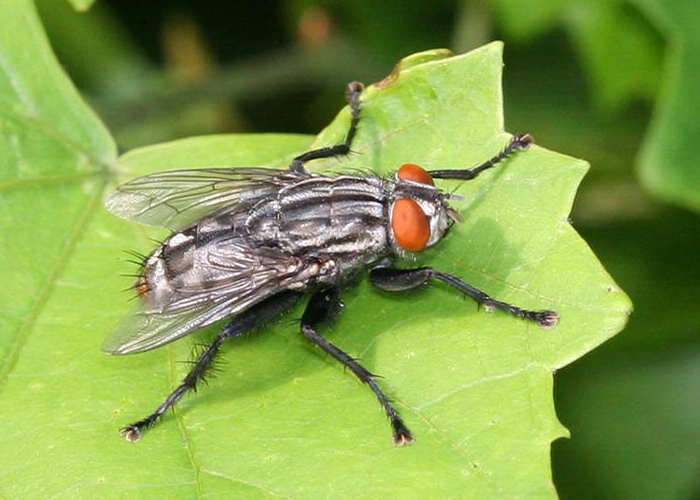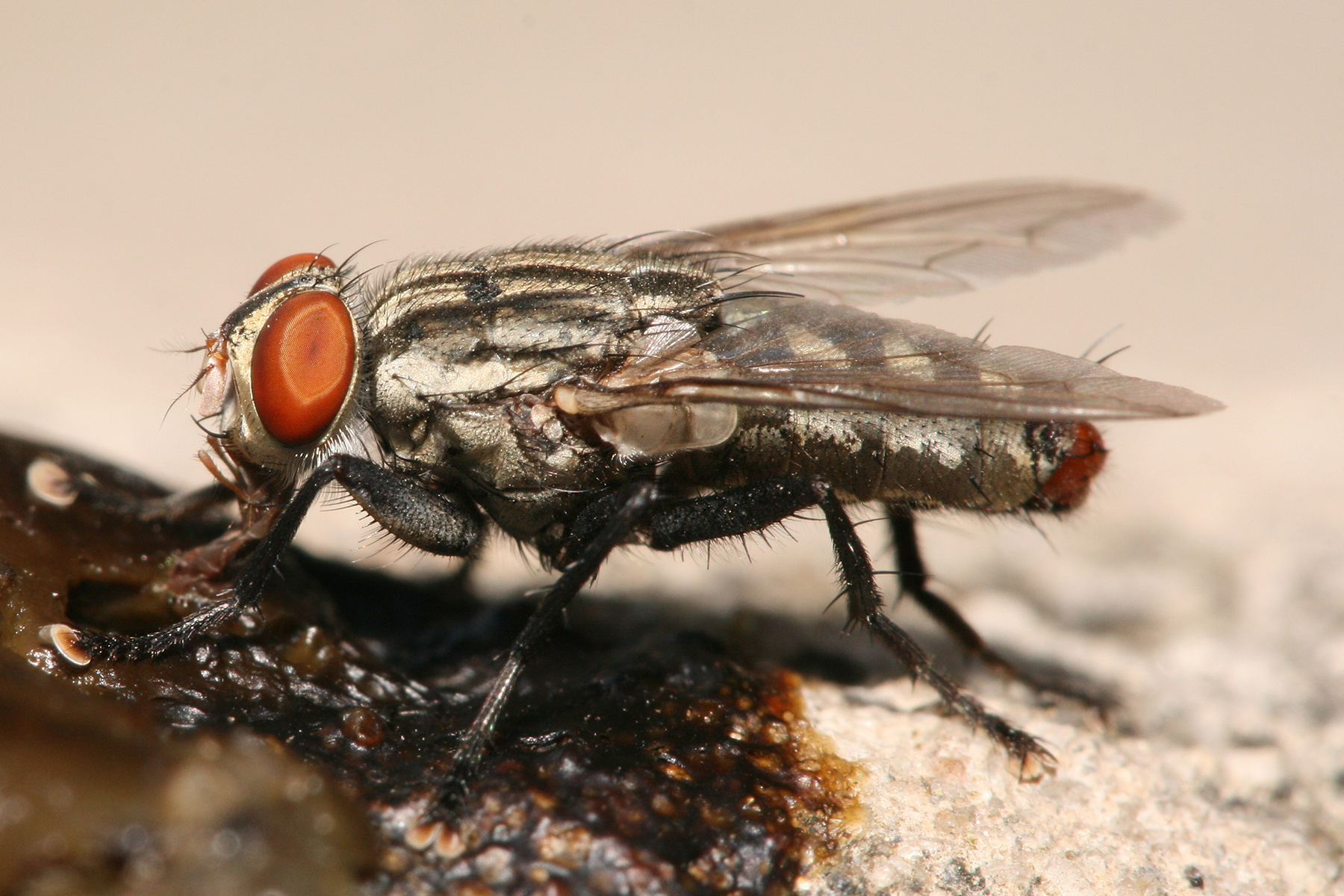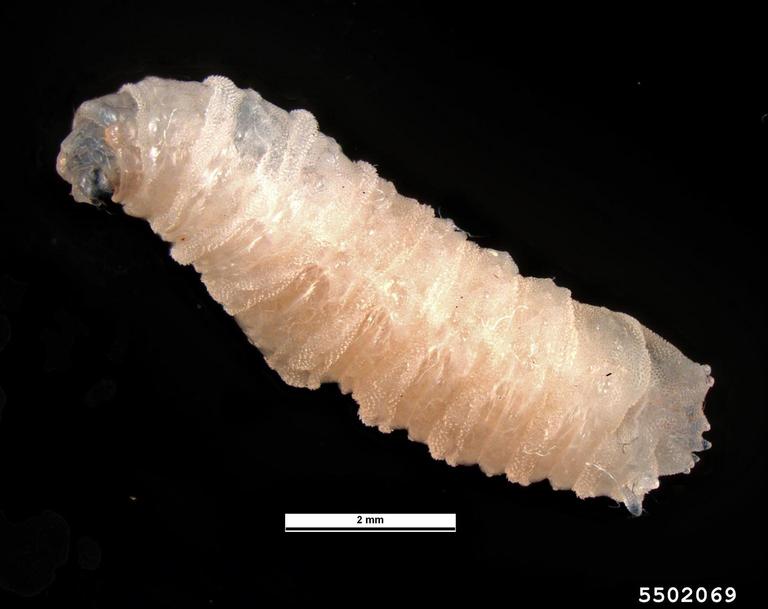Flesh Flies
Sarcophaga spp.
Identification
- large and gray with a checkerboard pattern on abdomen
- three dark stripes on top of thorax (house fly has four)
Nesting Habits
- eggs may be laid on dead animals, in or around garbage/ dumpster receptacles, and decaying organic material
- many flies indoors may indicate that an animal has died in a wall void or somewhere within the building
Diet
- larvae feed mostly on animal carcasses, garbage and decaying organic material
Significance
- can spread disease through contact
- nuisance inside buildings; infrequent indoor pest
IPM Recommendations
- Keep exterior doors closed, install screen doors or install an automatic door closer, especially on doors leading into the kitchen.
- Keep screens in good repair.
- Improve sanitation.
- Keep dumpsters at least 50 feet from the building.
- Locate breeding susbstrate, if possible, and remove.
- Keep trash cans, dumpsters and garbage areas clean and free of odor.
- Close lids on dumpsters and garbage cans.
- Exclude fly entry via caulking, weather stripping, door sweeps, screens, etc.
- Properly place light traps to catch flies that come indoors.
- Use a fly swatter.




